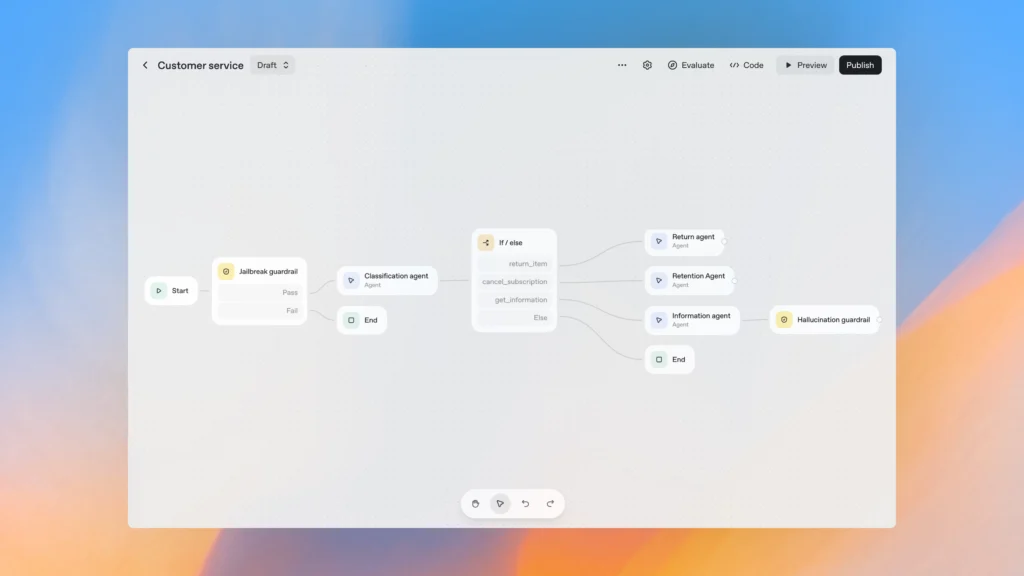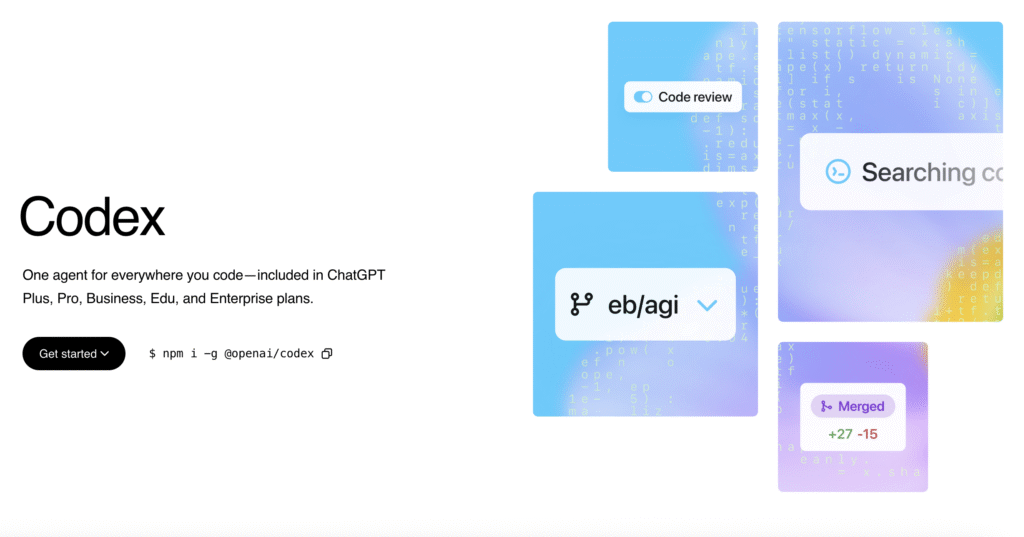Something big just happened.
At OpenAI’s DevDay 2025, Sam Altman and the team didn’t just announce new features. They announced a new direction that turns ChatGPT from a product into a platform, and OpenAI from a model company into something closer to an operating system for the AI economy.
OpenAI DevDay 2025: The Moment AI Became an Operating System
OpenAI DevDay 2025 marked a turning point in technology – the moment AI evolved from being just a tool to becoming an operating system for everything. With groundbreaking updates that integrate AI deeply into apps, workflows, and devices, OpenAI showcased how the future will run on AI, not just with it.
Before DevDay 2025, ChatGPT was already the most-used AI tool in the world. But its use was mostly limited to conversations, content creation, and simple automation. Developers wanted deeper integration — a way to make AI part of their products, not just a helper on the side. This year, OpenAI finally delivered that bridge.
Let’s break down what was announced, what it means, and why this moment matters more than it looks.
OpenAI DevDay summary 2025
OpenAI DevDay Summary 2025
OpenAI DevDay 2025 marked a major shift – turning ChatGPT from a chatbot into a full AI platform. ChatGPT can now host third-party apps, letting users access tools like Canva or Spotify directly in chat. OpenAI also launched AgentKit for building autonomous AI agents and released Codex 2.0 for smarter coding.
A new partnership with AMD boosts computing power, while collaborations with companies like Spotify and Jony Ive show OpenAI’s focus on enterprise and device innovation. In short, OpenAI is building the foundation for the AI operating system of the future.
1. ChatGPT Just Became an App Platform
This might be the biggest change since GPT-4.
ChatGPT can now host third-party apps directly inside it. Developers can build tools that run within the chat experience, meaning users can browse homes on Zillow, design in Canva, or build playlists in Spotify without leaving ChatGPT.
There is now a full SDK for developers, an App Directory inside ChatGPT, and built-in payment and monetization support.
It is not just a chatbot anymore. It is becoming the App Store of AI.
Why it matters:
This is the next logical step for OpenAI. The real moat is not the model but the ecosystem. The more apps that live inside ChatGPT, the harder it becomes for competitors to catch up.
2. AgentKit: Building Autonomous AI Agents

OpenAI launched AgentKit, a toolkit for developers to build autonomous AI agents that can take actions, call APIs, and complete multi-step tasks.
Think of it as giving developers a framework to build their own copilots, not just chat assistants but agents that actually do things.
Examples include:
- A product manager could have an agent that pulls data from Notion and Jira to write weekly updates.
- A marketer could have one that runs A/B tests automatically.
Why it matters:
If ChatGPT Apps are the interface, Agents are the workers. Together, they turn OpenAI’s platform into a living system that can act, not just answer.
3. Codex 2.0: The Developer Co-Pilot Grows Up

Codex, OpenAI’s model for writing and understanding code, received a major upgrade. It is faster, smarter, and now natively integrated into the SDK and API tools.
Developers can embed Codex into their own systems, from IDEs to enterprise workflows, and use natural language to generate or modify production code.
Why it matters:
Codex 2.0 is not about code completion anymore. It is about automation and teaching machines to understand logic, not just syntax.
4. OpenAI’s Compute Power Move with AMD
One of the most interesting announcements was OpenAI’s partnership with AMD to deploy roughly six gigawatts of GPU compute, along with a performance-based stake of about ten percent in AMD.
Altman summed it up clearly: “We need as much compute as we can possibly get.”
Why it matters:
Compute is the new oil. This deal gives OpenAI more control over performance, cost, and reliability, and signals that they are playing the long game.
5. The Enterprise Focus Is Official
OpenAI is now explicitly focused on enterprise adoption. Partnerships with companies like Spotify, Zillow, and Mattel show the direction clearly, embedding ChatGPT into business operations and customer experiences.
Expect deeper integrations into internal systems like CRMs, help desks, and analytics platforms.
Why it matters:
Consumer AI made OpenAI famous. Enterprise AI will make it dominant.
6. Jony Ive Is Designing the Future of AI Devices
OpenAI confirmed its collaboration with Jony Ive, the design visionary behind the iPhone and the Mac.
They are exploring 15 to 20 device concepts focused on natural, ambient interaction that emphasizes voice, sensors, and environmental awareness instead of screens.
Why it matters:
If ChatGPT is the brain, this could be the body. This partnership could redefine how humans interact with AI, not through screens but through experiences.
7. The Scale Numbers Are Getting Hard to Ignore
A few stats from the stage:
- 800 million weekly active users on ChatGPT
- Over 6 billion tokens processed every minute
- More than 4 million developers building on OpenAI’s APIs
Why it matters:
This is no longer early adoption. We are entering a mature phase of the AI market where scale, reliability, and ecosystem matter more than novelty.
Real-world impact on work automation and users.
AgentKit could redefine productivity at every level. Instead of manually managing dozens of SaaS tools, teams could rely on AI agents that operate across them — scheduling meetings, updating CRMs, running reports, or even managing budgets autonomously. We’re moving from task automation to goal automation.
The Big Picture: OpenAI Is Building the AI Operating System
When you look at the pieces together, the vision becomes clear.
ChatGPT is the interface.
AgentKit is the automation engine.
Codex is the developer layer.
AMD provides the compute backbone.
Jony Ive brings human-centered design.
This is not a collection of features. It is an architecture. OpenAI is quietly assembling the stack that future AI companies, and even competitors, will build on.
What's my take?
A year ago, ChatGPT was a chatbot.
Today, it is an ecosystem.
If 2023 was the year of models, and 2024 was the year of copilots, then 2025 is the year AI became infrastructure.
Builders should be paying close attention. The platform phase of AI has begun.
TL;DR
ChatGPT is now a platform. Agents are the new apps.
OpenAI is not just launching features; it is laying the foundation for the AI operating system of the future.
At ToolJunction, we’re building the connective layer of this new AI ecosystem – helping founders, creators, and businesses discover the best tools, frameworks, and opportunities emerging from this next phase of AI.






